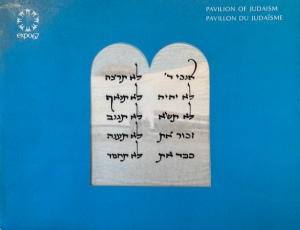In 1941, the Nazis established the Theresienstadt Ghetto outside Prague. By the war’s end, 33,000 people died there and another 88,000 stayed there for months or years before being deported to extermination camps.
Despite the tremendous overcrowding and very difficult conditions, the prisoners in Theresienstadt maintained a rich cultural life with lectures and performances. The 15,000 children who passed through the ghetto had a daily routine of classes, athletic activities and art. The ghetto had a library which contained 100,000 books and by 1943, it had 15 full-time librarians.
One of the items in the ghetto library was this Zion Album, sheet music printed in New York in the 1910s. It includes two Zionist songs: “Hatikvah“ (The Hope), which became Israel’s national anthem and
“Dort wu die Zeder” (Yonder where the cedars tall), which was written in 1885 by Itzhak Feld, a German-speaking poet and lawyer.
Picture a prisoner in Theresienstadt going to the library and signing this out. That person dreamed of a better future, maintained the hope they would get out of the terrible situation, and thought about the possibility of going to the Jewish homeland to be safe and free.
I like to think that person believed that tomorrow would be better than today. I like to think that all of us can believe it too.







